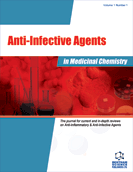Abstract
A number of novel quinolone derivatives have been recently reported to posses in vitro and in vivo anti mycobacterial and DNA gyrase inhibition activities. It is known that mycobacteria expressing resistance to both isoniazid and rifampin (multi-drug resistant, MDR) is sensible to fluoroquinolones. Ciprofloxacin, oxfloxacin, moxifloxacin and levofloxacin are increasingly used for the treatment of tuberculosis, because they inhibit the topoisomerases II (DNA gyrases) and IV, essential enzymes to maintain the supercoils in bacterial DNA. It has been demonstrated that complex mutations in DNA gyrase GyrA2GyrB2 associated with quinolone resistance or hypersusceptibility take place in several MDR clinical isolates of M. tuberculosis. In this article we report the anti mycobacterial properties, mode of action and structure activity relationship (SAR) studies of the known quinolone derivatives. Furthermore, we report the synthesis and activity of 3,9-disubstituted-6-oxo-6,9-dihydro-3H-[1,2,3]-triazolo[4,5-h]quinolone-carboxylic acids and their esters as a new class of potent anti mycobacterial agents. The triazoloquinolone derivatives are particularly interesting for their activity against MDR M. tuberculosis.
Keywords: Quinolones, anti-tubercular activity, anti-mycobacterial activity, triazoloquinolones, MDR-TB, DNA gyrase inhibitors, SAR analysis
 4
4





















